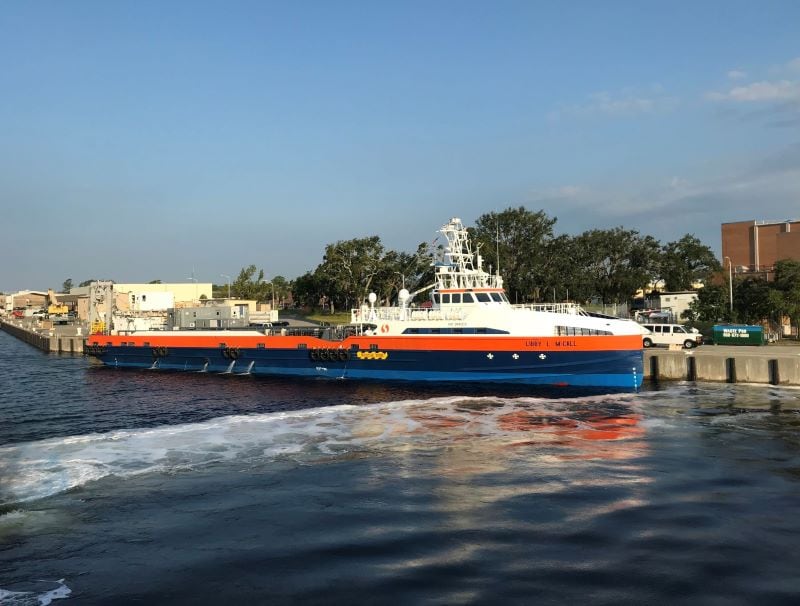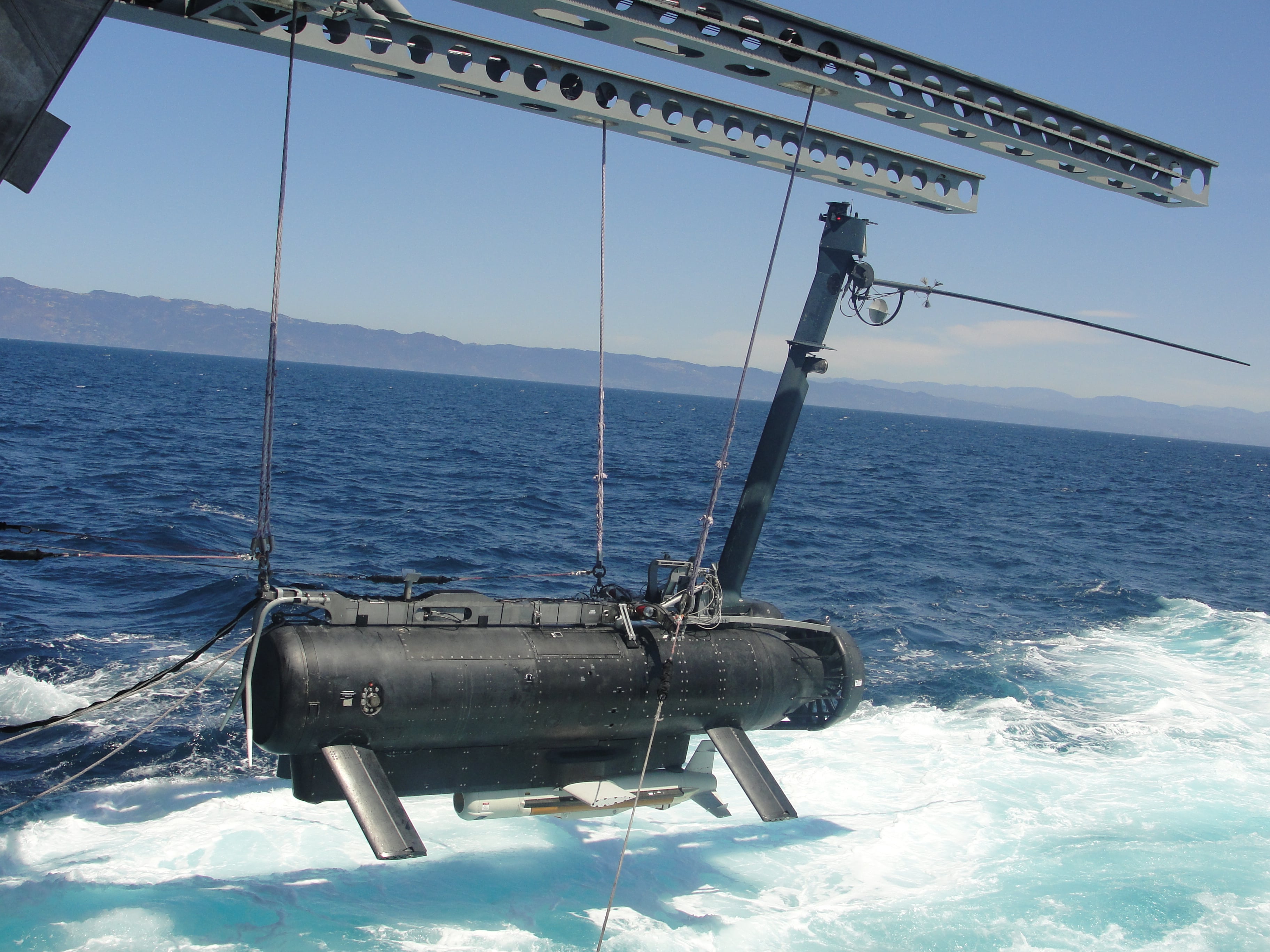WASHINGTON — The U.S. Navy released March 16 its long-discussed Unmanned Campaign Plan, intended to map the road ahead for the service’s unmanned systems. But the plan is short on details and measurable goals, which left key national security leaders wondering if the service had anything else to share.
“I was really disappointed with the lack of substance,” Rep. Elaine Luria, D-Va., said during a hearing with the House Armed Services’ sea power subcommittee. “I thought it was full of buzzwords and platitudes but really short on details.”
Most notably, the Navy did not seem to have many answers as to what changes it would make to avoid costly mistakes such as the Remote Multi-Mission Vehicle, an unmanned system that was expected to form the backbone of the littoral combat ship’s mine-hunting mission package but was canceled in 2016 with hundreds of millions of dollars already sunk into the effort.
RELATED

High-profile failures, such as the RMMV, are at the core of the Navy’s credibility problem on Capitol Hill. And if the Unmanned Campaign Plan released to the public was part of the effort to restore Congress’ trust, it’s unclear how many were swayed.
“With the recent acquisition failures on the last several ship classes, those of us on this committee are skeptical of the Navy’s ability to shepherd this new technology into employable assets that contribute to the lethality of those forces,” Luria said at the hearing.
According to Vice Adm. James Kilby, the Navy’s top requirements officer, the document released this week was to serve explicitly as a framework while specific plans and timelines — even some systems under development today — are classified. In a March 16 roundtable with reporters, Kilby said the document signals the Navy is making progress.
“When we tried to produce this, documented at an unclassified level, we really were just signaling a rallying around and an understanding that this is a complex thing,” Kilby said.

The document also outlines that the Navy is shifting away from a focus on building large, expensive platforms and instead focusing more on fielding capabilities with an eye to how unmanned systems can be useful in meeting naval requirements.
“Through a capabilities-based approach we can build a future where unmanned systems are at the front lines of our competitive advantage,” the document read. “The Naval force needs to move toward a capability-centric proactive environment able to incorporate unmanned systems at the speed of technology, to provide maximum agility to the future force.”
That approach may differ from the approach taken with the RMMV, which was conceived from the outset as means to “get the man out of the minefield” by having an unmanned system find and neutralize a mine. The technology proved unreliable and unworkable, and the Navy has yet to field its replacement system for the LCS mine warfare mission package.
The subject of the RMMV came up at the hearing Thursday, after Rep. Rob Wittman, R-Va., used it to illustrate a point about preventing programs from lingering long after it appears unlikely they’ll succeed.
“The program went on entirely too long, we didn’t take lessons learned and we sacrificed needed capability based on the promise that something better would be coming along,” Wittman said.
Jay Stefany, the Navy’s interim assistant secretary for research, development and acquisition, told Wittman that the service’s early prototyping effort lets officials look at developing technologies earlier, allowing the Navy to make more informed decisions about moving forward with programs.
“Part of our effort is now to build one or two prototypes and get it into sailors’ and Marines’ hands,” Stefany said. “[They can] use it, see if it’s reliable and see if it’s going to meet the intent that we need it for, make sure our engineering community is heavily involved to make sure it’s going to have the tried-and-true reliability when we get it out there. And if we see a need, to do both land-based and at-sea testing before we move forward with acquiring them in quantity.”
‘It was just very thin’
But if the Navy plans to move away from a platform-focused approach and toward thinking about capabilities and how unmanned systems could provide them, there was precious little of that in the document, said Bryan Clark, a senior fellow at the Hudson Institute and a former senior aid to Chief of Naval Operations Adm. Jonathan Greenert, who is now retired.
“There was really no discussion about what missions or operational applications they saw as being useful for unmanned systems to perform,” Clark said. “And so it’s hard for the reader to understand: ‘Well, what’s so compelling about these unmanned systems that we need to spend money and time on them?’ ”
“They didn’t do a very good job of describing what missions they thought were most amenable to unmanned systems and why they were important for those missions. And that would be a way to explain why it’s so important that they develop them. It also didn’t explain why certain ones are going to have a high priority, because they deal with very high-priority missions,” he added. “It was very thin on that.”
That becomes an issue when one of the main goals of the document was to close a credibility gap with lawmakers who view the Navy’s track record as less than stellar in bringing along new technologies, Clark said.
“Part of the goal here is to reassure Congress and leaders in the government that the Navy’s got a good plan for its unmanned systems portfolio, and that it should be supported in its proposed budgets,” Clark said. “If I read this from the congressional perspective, I’m kind of like: ‘OK, well, this describes what you’re doing. I get zero sense of why you think it’s important that we invest in the next generation of these things because I don’t know what they’re going to do.’ ”
The framework as released lacks any milestones or mechanisms for Congress to hold the Navy accountable, which is a major problem if the service wants to restore trust on Capitol Hill, he added.
“If this is the centerpiece of the campaign plan document, it really missed the opportunity to describe how the Navy was going to go about maturing these systems and over what time periods,” he said. “Because they talk about accountability being one of the reasons they did the campaign plan, yet I don’t see any mechanisms in there that I could use, if I was Congress, to hold people accountable.”
The framework is also missing an organizational signal that the Navy is changing its ways in order to improve its track record on fielding new systems, such as creating a new office or empowering an existing office with new authorities. That stands in contrast with Navy’s push toward a reliable communications network that connect weapons, sensors and platforms over a wide area like the Western Pacific.
Kilby told reporters there the Navy will not reorganize itself around advancing unmanned systems. He said the Navy has delivered unmanned systems in the past but not in a focused way and not as part of a broader effort to match those systems with missions in the fleet. Increased threats from peer competitors have put a new sense of urgency into those initiatives.
That has increased the sense of urgency inside the service, he said, and the Navy is committed to fielding a “hybrid” fleet of manned and unmanned systems.
“I’m not an advocate of reorganizing for reorganizing sake,” Kilby said. “I am an advocate of understanding the problem [and] going after it, which is what we’re trying to do with this plan.”
David B. Larter was the naval warfare reporter for Defense News.





